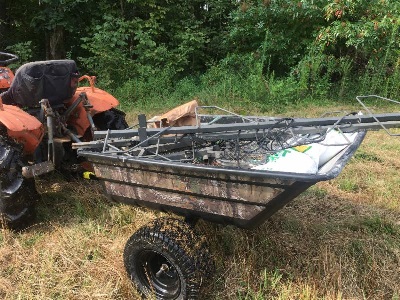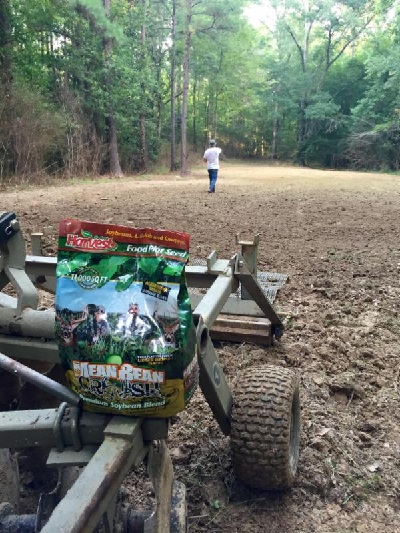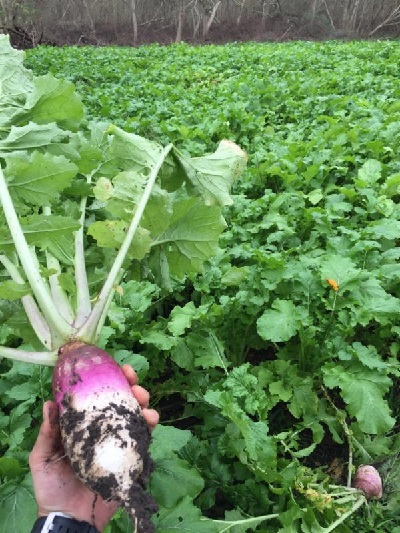 The much-anticipated deer season is just around the corner. Are you ready? You’ve probably taken inventory of your gear, practiced with your gun or bow and planned out your hunting schedule, but have you started planting your food plots yet?
The much-anticipated deer season is just around the corner. Are you ready? You’ve probably taken inventory of your gear, practiced with your gun or bow and planned out your hunting schedule, but have you started planting your food plots yet?Perhaps you’re crunched for time and are considering just doing without food plots this season. That’d be a mistake, especially if you hunt in areas where food sources are lacking.
Josh Honeycutt, Realtree’s deer hunting editor, says, “Having a healthy balance of food plots, natural vegetation and mast is crucial for the health of local deer population. Using a strategic combination of food plots and micro kill plots not only helps feed the herd but also puts you in position to pull deer within bow range. Planting food sources will take your deer herd and hunting to the next level.”
Test Your Soil
Before you start planting your food plot, make sure you take the necessary steps to ensure you get the most out of your plot.
“As for the planting itself, it’s easy to plant food plots when it’s convenient for you,” Honeycutt said. “But you can’t do that. You have to plant when the conditions are right. Don’t plant just because you have a free Saturday. Wait for the right time. It’s imperative to plant your food plots within a couple days of a forecasted, good, soaking rain.”
Jimmy Ray Parrish, Pennington Seed regional sales manager, says before you even consider planting a food plot, perform a soil test on the land.
“Each food plot needs a separate test,” he said. “Don’t just assume that food plots in the same area will have the same soil type. It’s very important to have the pH and P (phosphorus) and K (potassium) just right to ensure the foot plot will adequately produce. Most people have no idea what the pH of their property is. They think they can just put out 13-13-13 fertilizer each year, but it’s a natural acidifier. If they do that each year without putting out lime, it will make the soil too acidic. They need to apply lime so that the soil maintains a pH of somewhere between 6.0 and 7.0 with 6.5 pH being perfect.”
Prepare the Seedbed


Once you’ve tested your soil, you must properly prepare the seedbed. If you don’t plant your seed in a nice, firm seedbed, you’ll experience problems.
Jason Campbell, brand manager for Plano Synergy, said, “Spray the food plot 10 days or more in advance of any ground-preparation work. When planting during the hot part of the summer, I recommend disking the plot rather than planting with a grain drill. The softer/loose soil will absorb and hold more moisture. Due to the warmer temperatures, half of the recommended fertilizer rate should be broadcasted and lightly tilled into the soil to help avoid fertilizer burn.”
Campbell said avoid planting cool-season food plot varieties too early when it is hot and dry, and don’t fertilize heavily immediately after planting.
“If the food plot receives just enough moisture to germinate the seed, but not much more immediately following germination, the fertilizer tends to burn the young seedlings,” he said. “Another very common issue is burying the seed too deep. Small seeded varieties (clovers and brassicas) should be planted at a depth of less than ¼ inch – preferably 1/8 inch or less.”
Select Your Seed
So, you’ve chosen a location and prepared the soil. What seed should you plant? You have numerous options and combinations to choose from, but if you want to keep it simple, consider Honeycutt’s suggestion.
“My go-to seed option is brassicas (turnips),” Honeycutt said. “This broad-leaf plant is easy to grow and deer love it. That said, it will not become heavily consumed by deer until the first frost hits. This triggers the glucose levels to rise in the plants, which makes it much more attractive, palatable and sweeter to deer. Once this occurs, it is eaten in two stages. First, the leaves are targeted. Then, deer will extract the turnips from the ground and consume them, too. This is a great seed to plant if you’ll be hunting in late October, November, December and/or January.”
Campbell said, “For a late-summer planting, when it is still too early and too hot to plant cool-season (fall) plant varieties, I would recommend planting legumes. Cowpeas and lablab, as well as soybeans, may be planted anytime during the summer as long as there is moisture. Evolved Harvest Mean Bean Crush would be the best product to plant this time of year.”
Parrish recommends offering the deer variety.
“Deer really like variety in what they eat,” he said. “When deer graze in the wild, they’re eating a variety of plants. When you plant a mixture, you help ensure that something will grow in that plot even if some of the plants don’t make it. I prefer to plant 50 % in annuals and 50% in perennials like durana white clover. My preference is Pennington Rackmaster Feeding Frenzy. It’s a high percentage of brassicas and legumes.”
Maintain Your Plot


After you’ve planted your plot, the work is not done. Make sure you fertilize and care for your plot as it grows from September through next May or June.
Parrish said, “If you fertilize it one time, hunt on it, shoot a deer and then forget about it, your plot will stop producing as it should. The intent of your plot is to help manage your herd during the fall, winter and spring. After the rut, bucks need nutrition to recover and does need nutrients to sustain their pregnancies, so you need to continue to fertilize to ensure your plot produces enough proper nutrients to supply and manage the deer herd.”
Last but not least, don’t forget to use your OxCart throughout your food plot preparation.
It’s the first utility dump cart you can fill full with seed, lime and fertilizer. It will save you time and your back with pro-grade durability and a hydraulic lift-assist and swivel design to handle dumping heavy loads up to 90% easier.
Best of luck!
Check out the Realtree Half-Ton Hauler Video and the How It Works Video!
For more info, visit www.oxcart.com.
